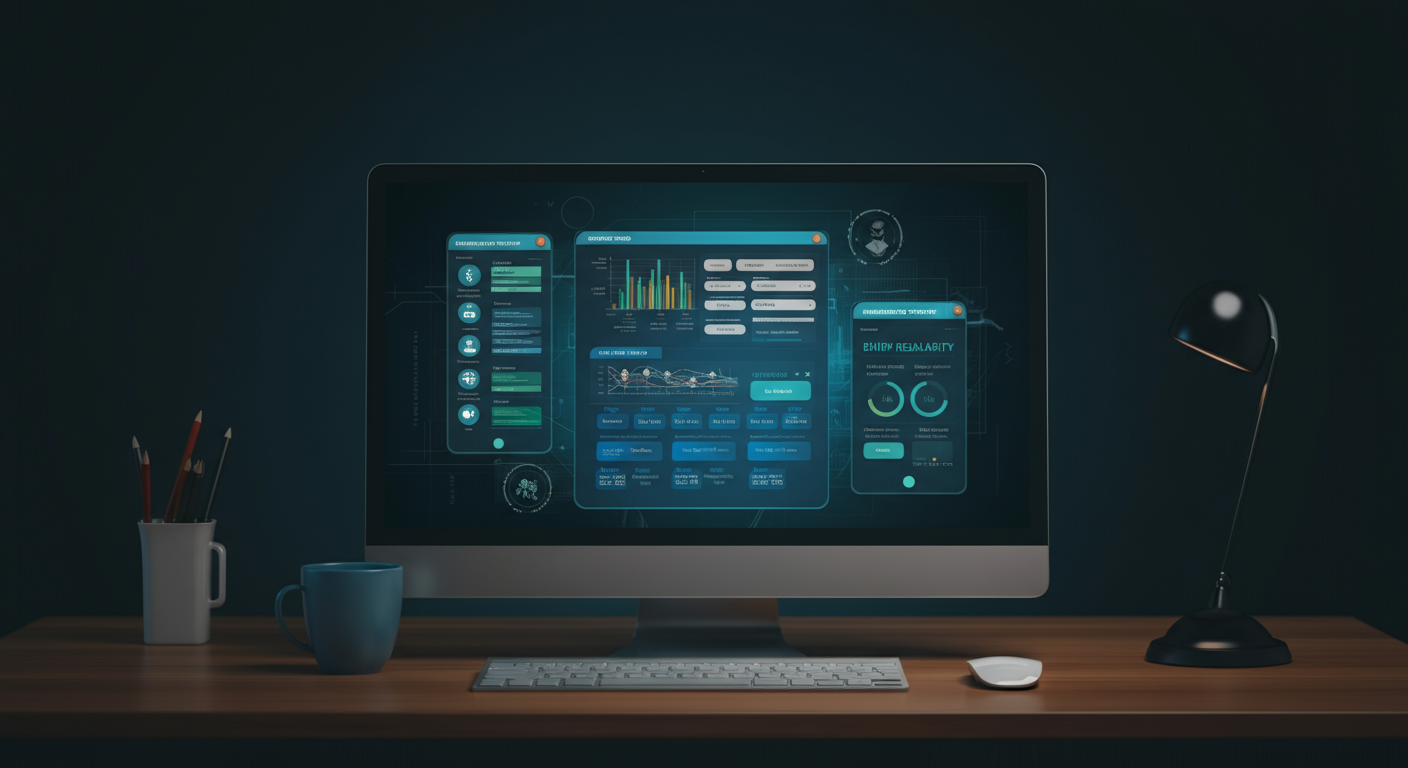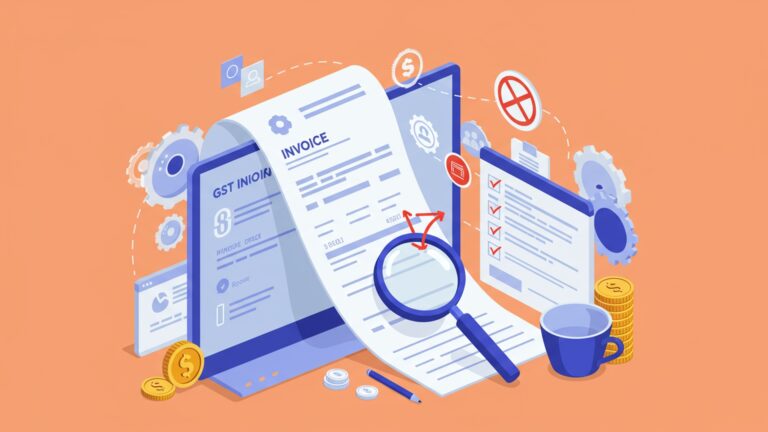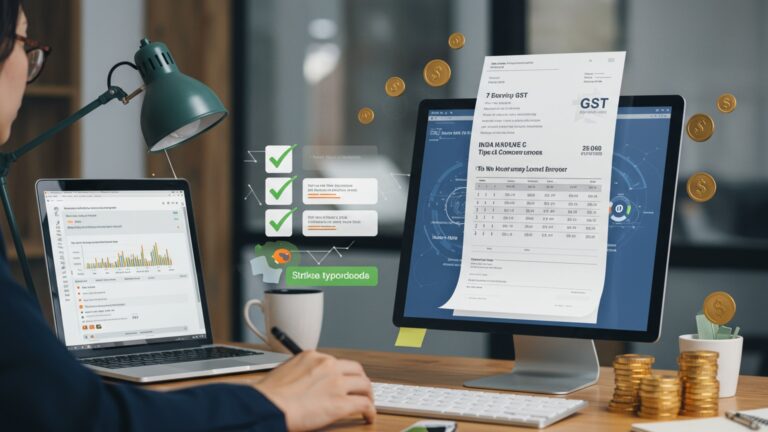Transform Your Healthcare Revenue: The Ultimate Guide to Hospital Billing Software
The billing process for hospitals is a lot more sophisticated than what it used to be decades ago. The healthcare industry hospitals deal with billing processes of immense magnitude. The volume of claims process is leaps and bounds away from any other industry. People are still stuck in the past and stubbornly cling to outdated systems, which in turn, results in a plethora of bottlenecks and errors. With the proper Billing Software, hospitals can tackle the errors and revenue losses and turn the failures in patient care to a refined process.
With the explosion of the healthcare industry, the need to operate at full capacity, is refined. The revenue cycle management software is somewhat of a mystery to many because of the strained ratio of practitioners to patients per practitioner. With modern software solutions, hospitals can cope with the mountain of intricate coding requirements, and the evolving regulations of the industry. Without automation, the ever evolving patient and administrative requirements will suppress physicians to an unsustainable level.
The healthcare industry loses roughly $125 billion a year, which is an insane and unsustainable loss. The technology and care patients receive is severely restricted, and a lot of money goes to waste. Investing in the proper billing and financial software, will allow hospitals to properly care for their patients, and address them when they need it, post upgrade. Streamlining processes is the ideal way to reduce wastage and enhance the processes equally.An analysis into the challenges motivating the adoption of hospital Billing Software and its resulting-solutions that brings value healthcare organizations is pivotal to understanding the hospital billing landscape. This guide focuses on all the relevant issues of hospital Billing Software by detailing its features and describing the best practices for implementing it, thus empowering healthcare leaders to make strategic decisions that ensure the sustained success of their organizations.
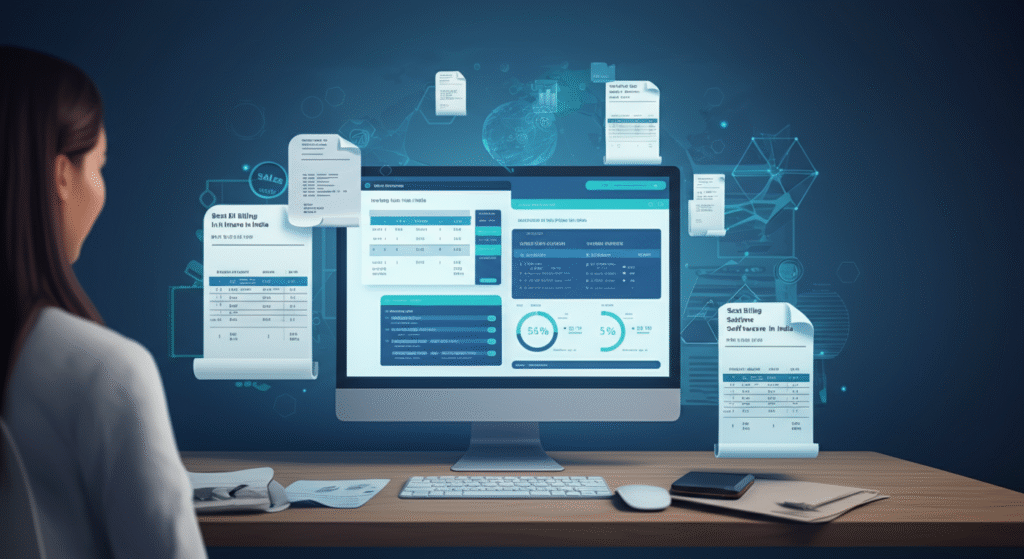
Critical Challenges in Hospital Billing Operation
Hospitals face critical issues in the billing operations due to coding errors in medical billing which severely undermine the operational efficiency and financial performance. Errors in coding constitute some of the hardest hits and in the medical billing over to 80% errors are rampant in coding issues out of which most are due to lack of staff training or old, outdated software that lacks validation features.
Additional employee hours are required to investigate, modify, and refile claims as a result of the initial claim denial. The average increase in the complexity of a case increases the average rework cost for denied claims to about $25 to $117. The case being processed thousands of times each month shows a lot of value being wasted in the form of financial and time costs to simply support a business as opposed to actual caring for the patients.
Apart from the issues and factors mentioned under each subheading, hospital billing operations are heavily impacted by policies posed by legal authorities. Each legal document like HIPAA in healthcare and medicare or medicaid and billing rules of the particular state brings in a massive change. Non adhering to such rules may pose legal consequences that may damage the hospital. With such features compliance Billing Software hospitals need robust compliance features.
Even the satisfaction of the patient hinges on efficient billing systems. Frustrating or inaccurate billing causes patients to neglect payments, begin charge disputes, or seek alternative care. How patients communicate about the costs, insurance, and billing has become a pivotable differentiating factor critical to a hospital’s standing and profitability.
Important Aspects of High-Performance Billing Software
Automated coding capabilities stand as the building blocks of effective hospital Billing Software. The more advanced systems make use of AI and machine learning techniques to suggest appropriate codes with a clinical document, trimming the time spent manually coding to more than 40 percent and improving associated accuracy rates. These systems learn from the corrections and updates made, becoming more precise, and learning to adapt to new coding standards as needed.
Claim scrubbing functionality serves as a quality control system to capture issues that could risk denial of payment prior to handing them to the payers. Comprehensive scrubbing tools check claims for missing information, over allegations, coding checkup errors, and compliance check errors, making it possible for staff to fix issues before they arise. This capability alone can mitigate the claim denial rates by 15 to 25 percent, thus improving cash flows and administrative burden.
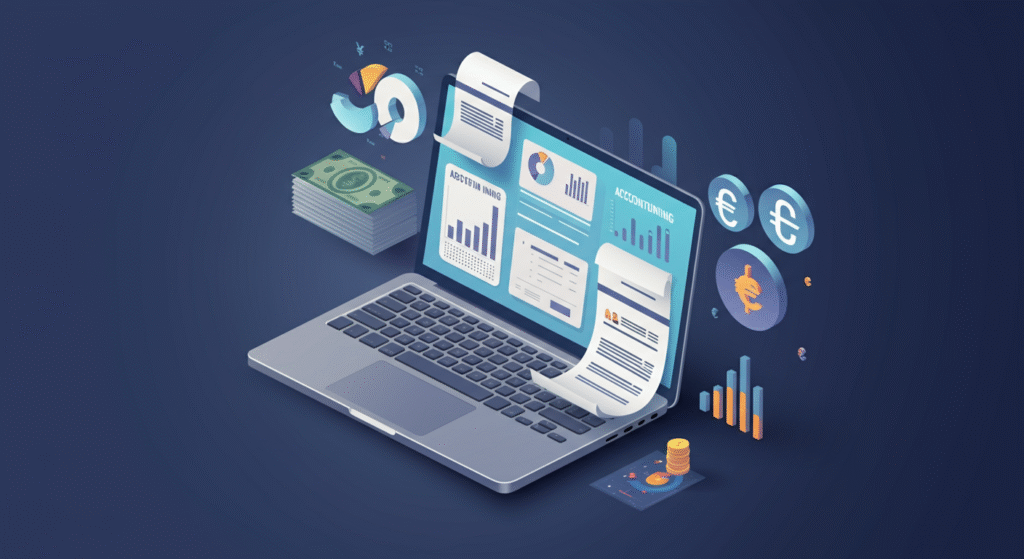
Billing staff can confirm coverage and benefits before service provision with real-time eligibility verification. This capability precludes surprise claim denials due to coverage lapses, benefit caps, outdated patient information, or false patient information. Major payer systems integration allows for instant verification which improves patient estimate accuracy and minimizes post-care billing disputes.
In-depth reporting and analytics uncover insights regarding improvements, trends, and bottlenecks within the billing performance. The suite of features and functionalities that hospital operations require from Billing Software is best met by offering flexible dashboards that monitor the most relevant metrics like claim approval ratio, payments received in the specified time
frame, and other essential revenue cycle analytics. This fosters secure and informed decision-making paired with steady process refinement, fostering optimization.
Transformative Benefits of Modern Billing Software
The optimization of the revenue cycle is arguably the most pronounced advantage associated with the use of sophisticated Billing Software. Most hospitals experience a net revenue increase of approximately 10 to 15 percent within the first year of investment, with further improvements realized as staff become adept at skillful use of the software. Improved cash flow as a result of better claim submission and clearing, lower denial rates, and improved collections assists with the case in routine operational funding and strategically driven growth investment sustenance.
The software’s ability to reduce errors enhances billing precision and decreases the administrative workload on personnel. Automated business rules, coding aids, and compliance checks that are part of billing systems with automated claim scrubbing capabilities to validate coding let staff focus on interaction with patients and in-depth case analysis, improving their professional and personal fulfillment with work and productivity.
Charges, payment portals, and payment clearing portals streamlining bill explanation processing improves the overall experience for the patients. Modern software solutions feature patient portals that not only display charges for the services but also provide real-time updates on the insurance claim processing and payment options. The ability to manage billing-related tasks independently online drives patient appreciation, leading to better payment timelines and improved patient satisfaction scores.
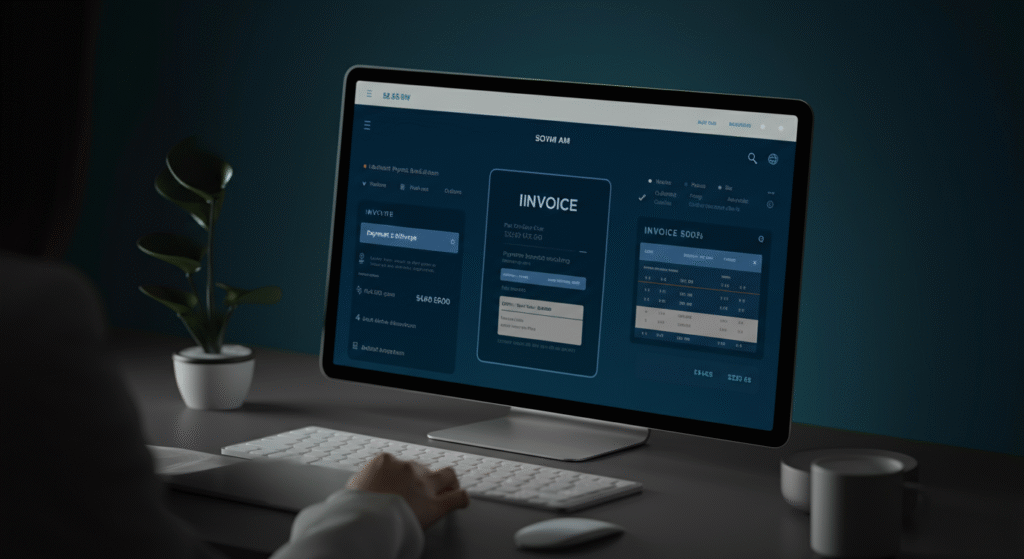
The gains in operational efficiency go beyond the billing department and have an impact on the healthcare organization as a whole. Improved workflows streamline the interval between the rendering of the services and the receipt of payment, which enhances the organization’s working capital and minimizes the need for borrowing. With increased staff productivity, automation of routine tasks enables staff to concentrate on exception handling and patient service activities.
Uninterrupted Linkage with Healthcare IT Systems
The integration of electronic health records (EHR) system) automates workflows and resolves problems with duplicate data entries and transcription errors. Automatic charge capture makes the charge flow seamless when Billing Software interfaces with clinical documentations, guaranteeing charge accuracy. This integration also enhances clinical billing contextual understanding aiding complex case and payer inquiries.
Connectivity of a practice management system enhances efficiency of scheduling, registration, and billing interplay. Automated appointment scheduling creates billing records and updates patient population data while ensuring the insurance information is consistent through the patient’s journey. This level of integration significantly enhances data accuracy and patient experience while reducing administrative overhead.
Links with diagnostic imaging and laboratory systems enable automated charge capture for diagnostic services ensuring no billable services get omitted. This automation is crucial for high-volume diagnostic hospitals that require manual data entry, as it is time prohibitive and prone to errors. Automated charge capture improves accuracy as well as eliminating missed charges, which can enhance revenue by 5 to 8%.
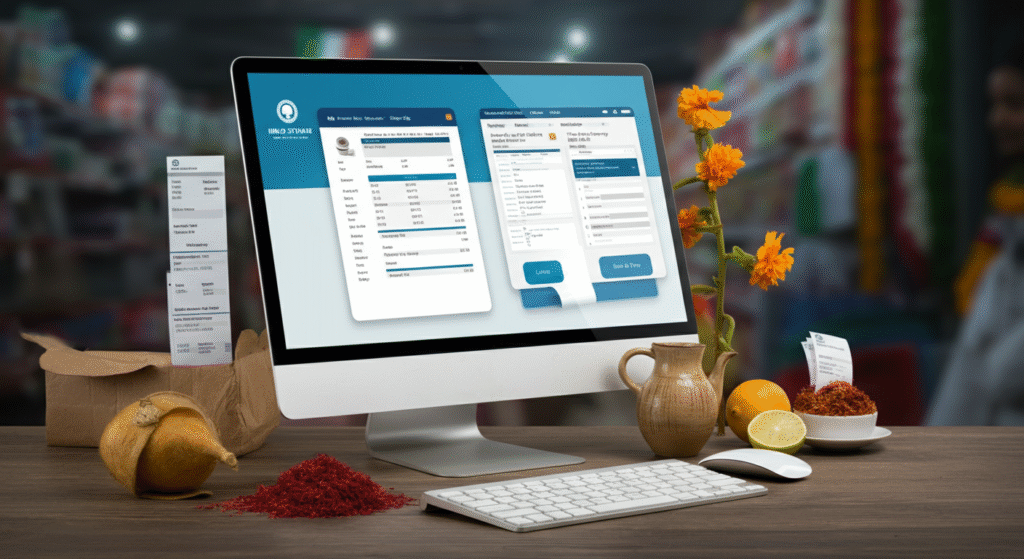
Through financial system interfaces, a hospital can monitor its cash, expenses, and revenues in real time, improving cash flow and facilitating better overall financial stewardship and planning. Integration of billing systems with general ledgers and receivables systems allows financial managers to monitor financial and revenue cycle performance to guard against collection problems and improve working capital management and revenue collection. To realize maximum value, hospital Billing Software must enable and support these essential interfaces.
Success Stories: Achieving Real Outcomes Through Implementation
Remarkable outcomes were observed after the implementation of comprehensive Billing Software at a regional medical center of 300 beds located in Texas. Claim denial rates were cut from 12% to 4%, the average payment time decreased from 45 to 28 days, and there was a net increase in patient revenue of 2.3 million dollars annually. Increased staffing productivity of 25% enabled the medical center to manage the higher patient load without a proportional increase in billing staff.
Significant problems inaccuracy of coding and compliance management plagued an urban teaching hospital. With the deployment of Billing Software that contains coding, the facility was able to reduce coding denials by 35% and improve compliance audit scores by 40%. Enhanced accuracy in billing was accomplished by self-completing clinician documentation features and by providing less queryable documentation.
Uncoordinated systems and disparate locations made consistent billing practices almost impossible for a rural hospital network. Utilizing Billing Software at all facilities standardized workflows and improved training and performance monitoring. Through improved charge capture and reduced claim denials, the network realized an additional 1.8 million dollars in revenue while retaining the independence to make patient care decisions.
The success stories show that the most effective Billing Software for a hospital’s operational needs can provide tangible outcomes for distinct types and sizes of facilities. Attaining success requires choosing the software that appropriately fits the organizational requirements, executing the installation correctly, and providing sufficient training to the personnel to fully utilize the system’s capabilities.
Developing Factors Influencing Healthcare Billing Technology
Utilizing AI and Machine Learning Technology will help streamline the Billing Software and also help enable predictive analytics that identifies issues that may arise with claims before submission. These systems that are more sophisticated will be able to predict payers’ actions and suggest improvements that will help in the optimization of the coding and recommend steps to improve the workflow based on historical data. AI-enabled systems can improve efficiency and accuracy of the work at the same time reduce the costs to administer the work by 30 percent.
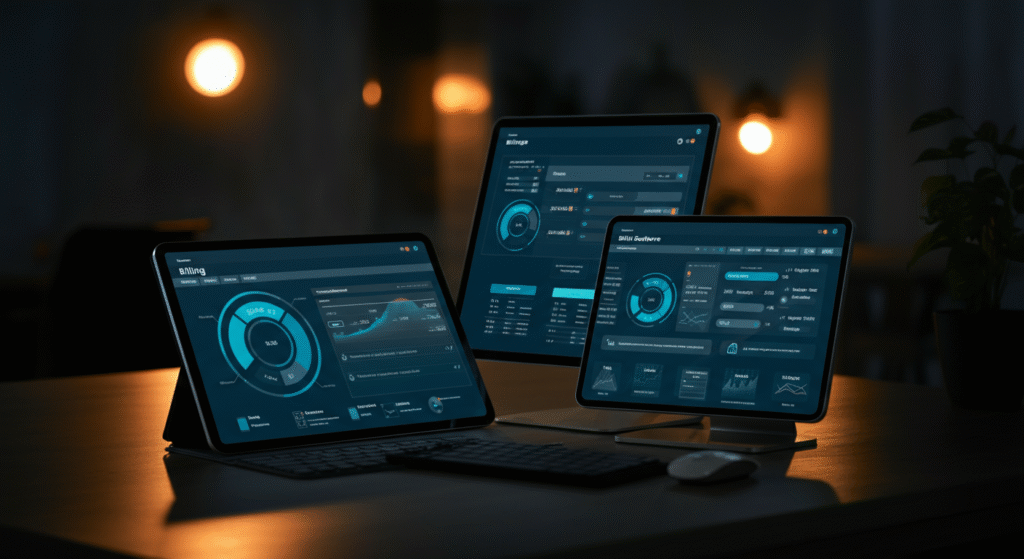
Increased preference for IT to spend less money and infrastructure needing to be set up drives cloud based billing to be the only feasible option. IT cloud systems are also easier to deal with in terms of offering automatic updates, enhanced security measures, and improved systems for recovering data in case of a disaster. Advanced billing systems will therefore be available to healthcare organization of all sizes and more sophisticated software can be accessed with no major investment.
These improve the workflow and flexibility of healthcare billing and as a consequence of remote work, productivity is bound to increase. With claims as well as billing and patient case inquiries able to be accessed and answered through mobile devices, work can be done remotely at smartphones and tablets. As with all other industries, comes an expectation to improve and evolve in the operational requirements that suit the given time.
The potential benefits of blockchain technology in the healthcare sector include improving the transparency of claims processing and eliminating fraudulent activities in billing. Even at this early stage, blockchain applications have the potential to automate interactions between payers, establish tamper-proof audit logs, and minimize conflicts owing to better integrity of the data. Some pioneers are testing blockchain pilot programs to transform the industry benchmarks for claims processing and payments verification.
Strategic Guidance for Selection and Implementation
Careful analysis of the organizational structure, technical specifications, and strategic foresight of the institution integrates the prospective Billing Software’s functionalities and features to the hospital operations. Terms of engagement in comprehensive needs assessments to successful implementations is to examine workflows, evaluate gaps, and delineate metrics. Holistic stakeholder engagement from the clinical and IT as well as the financial division of the institution ensures that all operational obligations for the selected solutions are met.
Evaluation of prospective vendors must entail demonstrations of core functionalities, integration, and customer service. Comparative analysis of peer healthcare institutions collected from references greatly informs on the expected performance as well as the challenges to be encountered during implementation. The analysis of the total cost of ownership must not only be on licensing the software, but also the implementation services, training, and continuous maintenance of the system.
Change management strategies outline the methods incorporated for the successful adoption of the new Billing Software. Training programs for the employees must be scheduled in alignment with the go-live date and should persist for at least the first few months of operations. Timelines alongside specified expectations on offered support designed for all levels also aid in encouraging adoption as well as accelerating the pace of mastery achieved.

Processes such as performance monitoring and continuous improvement activities ensure that Billing Software derives its intended benefits over time. Regular monitoring of specific indicators, collecting user feedback, and looking for optimization opportunities enhance ROI. Businesses, for instance, should set baseline metrics before implementation to give them an accurate evaluation of the attained advancement and highlight the additional areas that still need refinement.
Maximizing Revenue Potential for Hospitals with Smart Software Choices
In the healthcare sector, hospitals are required to keep up with the recent innovations in value-based care, patient experiences, and operational performance. The relative appraisal and investment in sophisticated Billing Software systems enables hospitals to thrive in the ever-changing dynamics of healthcare systems. Providers with the most appropriate technological solutions can optimize billing processes and convert them from being liabilities to profit centers, which may subsequently allow the facility to spend more during the operations, growing the organization in the process.
Clotouch Technologies recognizes the challenges associated with hospital billing systems and the relevance of sophisticated software solutions in yielding tangible returns. Our knowledge with the implementation of healthcare technologies prepares your organization to successfully deal with the selection challenges and Billing Software implementation hurdles that are tailored to your organization’s needs.
Strategic investment in qualitative Billing Software systems integrated with other operations results in reaped returns not just through financial performance but improves billing-automated technologies. In an escalating competitive healthcare landscape, enhanced precision, better-elaborated workflow processes, and enhanced patient experience improves sustainability to systems. Organizations which focus more on billing excellence are in a better competitive position to spend more on better patient care, technology, and staff development through the savings.
Assess your existing billing practices using contemporary software solutions to determine how they can enhance your organization’s financial outcomes. The integration of modern technology with appropriate implementation and continuous refinement can reveal substantial revenue opportunities while reinforcing your dedication to outstanding patient care.

